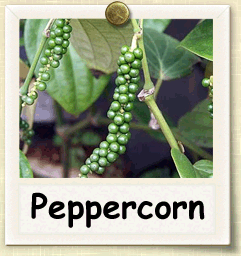▼
Wednesday, September 30, 2015
Tuesday, September 29, 2015
The Maple Hill Hop 100
What?
One
hundred
HOPS?
Wow, when did that happen?
Thanks to everyone for joining us each Tuesday

Welcome to
The Maple Hill Hop.
This is a hop for folks who love the outdoors.
Feel free to post about anything that's going on
OUTSIDE
in your neck of the woods,
no matter the season.
no matter the season.
(Please share only outdoor posts.)
*Grab the button above to link back to Maple Hill 101.*
*******
The fall veggie garden was started this month.
With designated beds lingering empty most of the summer,
I was just itchin' to get some seeds in the ground.
A few green bean plants are coming up.
These are the Slenderette variety that I've grown before.
Why change what works?
If all goes well, we'll be enjoying some of these on our Thanksgiving table.
We've also got broccoli, carrots, kale, leek, lettuce and turtle beans
getting a good start in the garden.
*******
The fall veggie garden was started this month.
With designated beds lingering empty most of the summer,
I was just itchin' to get some seeds in the ground.
A few green bean plants are coming up.
These are the Slenderette variety that I've grown before.
Why change what works?
If all goes well, we'll be enjoying some of these on our Thanksgiving table.
We've also got broccoli, carrots, kale, leek, lettuce and turtle beans
getting a good start in the garden.
I'm psyched about the sugar snap peas germinating.
These are an all-time favorite.
So sweet and tender, they are delicious fresh-picked for munching.
My garden mentor Lynn, introduced these to me a couple of years back,
and I am eternally grateful!
He's taught me so much in Farm School.
Although we are still having temperatures in the 80's,
I thought I'd give sowing beets a try.
I placed them on the northern side of the house,
under a native grass for shade,
and lo and behold, they decided to cooperate!
These will be sown every two weeks,
so that we will have a continuous harvest.
I can eat me a mess o' beets!
In other parts of the garden, they will be directly sown later this week.
It will be interesting to see if there is any difference
in the transplanted or direct-sown crops.
Here's how we roast them.
For the first time, we're growing an Asian cabbage called Tatsoi.
This deep green, compact cabbage has a sweet taste similar to spinach,
but nuttier.
Here's what it looks like when it's ready for pickin'.
Gorgeous, right?
It's a wonderful addition to salads, soups, and stews,
or used on sandwiches or in dips.
It's so exciting watching new seedlings pop up,
like Christmas every morning!
What's happening in your neck of the woods?
Let's HOP!
Friday, September 25, 2015
Tin Can Tourists

Loving all things vintage,
Big K sent this website to me
so that I could drool over some of the campers in the
Tin Can Tourists Club.
Started in 1919 near Tampa, Florida,
this club is still going strong,
encouraging members to enjoy good, clean, wholesome fun
with others who appreciate the way things used to be.
From their website:
"The groups' stated objective was “to unite fraternally all autocampers”.
Their guiding principles were clean camps, friendliness among campers,
decent behavior and to secure plenty of clean, wholesome entertainment
for those in camp. The group known for the soldered tin can on their
radiator caps grew rapidly during the twenties and thirties."
Folks
from all over the country gather to participate in cookouts,
meet up
with friends, and discuss information about retro trailers.
In between events, members can touch base
on various social media sources.

There are classified ads if one is looking to
buy or sell one of these quality homes on wheels,
but having a vintage camper is not even required for membership.
For those who are owners,
the website has an area to display pictures,
including restoration projects.
A wealth of information can be found
regarding a variety of trailers, such as: identifying campers,
the history of specific trailer companies and
locating parts for restoration.
What a valuable resource for those of us who appreciate vintage.

With groups in virtually every state of the union,
there's sure to be a club near you!
Wednesday, September 23, 2015
Tuesday, September 22, 2015
The Maple Hill Hop 99

Welcome to
The Maple Hill Hop.
This is a hop for folks who love the outdoors.
Feel free to post about anything that's going on
OUTSIDE
in your neck of the woods,
no matter the season.
no matter the season.
(Please share only outdoor posts.)
*Grab the button above to link back to Maple Hill 101.*
Autumn is in the air, people!
Although we still have heat and humidity akin to summer,
there is a slight coolness to mornings and early evenings.
We'll take it.
Fall officially starts on Wednesday,
but we thought we'd welcome it here on The Maple Hill Hop today.
Although we still have heat and humidity akin to summer,
there is a slight coolness to mornings and early evenings.
We'll take it.
Fall officially starts on Wednesday,
but we thought we'd welcome it here on The Maple Hill Hop today.
From The Farmer's Almanac:
What is the Autumnal Equinox?
"Fall begins on September 23, early in the morning at 4:21 A.M. The autumnal equinox is when the Sun appears to cross the celestial equator from north to south. (The celestial equator is the circle in the celestial sphere halfway between the celestial poles. It can be thought of as the plane of Earth's equator projected out onto the sphere.)
Another definition of fall is nights of below-freezing temperatures combined with days of temperatures below 70 degrees Fahrenheit.
The word equinox means "equal night"; night and day are about the same length of time. This occurs two times each year: Vernal in late March and Autumnal in late September.
In addition to the (approximately) equal hours of daylight and darkness, the equinoxes are times when the Sun's apparent motion undergoes the most rapid change. Around the time of the equinoxes, variations in the position on the horizon where the Sun rises and sets can be noticed from one day to the next by alert observers.
From here on out, the temperatures begin to drop and the days start to get shorter than the nights."
Our fall color is a little different here in Central Florida.
As summer bows out,
we enjoy a splash of vivid hues throughout the garden.
Thryallis and sweet potatoes line the east side of the house.
Our fall color is a little different here in Central Florida.
As summer bows out,
we enjoy a splash of vivid hues throughout the garden.
Thryallis and sweet potatoes line the east side of the house.
The rosemary out by the mailbox won't be fazed by the changing seasons.
The plumbego and native salvia intertwine near the rain barrels.
The self-seeding vinca sprawl near a toad house.
The sweet potato vine in the back bed
is stretching out to fill this bed.
The pigeon peas are blooming profusely,
and we look forward to eating these fresh picked.
The monarchs are back and enjoying the native milkweed.
We look forward to sharing the fall garden with these amazing critters.
We are blessed with a multitude of blossoms
that grace us each morning.
What's growing (on) where you are?
HOP on it!
Friday, September 18, 2015
Seed to Table Series-Peppercorn
Welcome to the final installment of our Summer Series,
Seed to Table.
Every Friday, we have explored a different crop
that you can grow in your own garden.
Whether you're in mid-harvest, looking ahead to your fall garden,
or just thinking about growing your own,
we hope this series has inspired you.
We begin with planting from seed or seedling,
and end up with a scratch recipe. Thank you for all of the lovely comments we've received
about this series.
************

source
Peppercorn seeds can be soaked overnight to soften the seed coat
and can be sown 1/4-1/2 inch into the soil.
Peppercorn germination can be slow, up to 30 days,
and it prefers warmer temperatures,
between 75 and 85 degrees.
In more southern climates, this unique plant enjoys full sun with some shade during the day.
In more northern states, it can be grown in a greenhouse
or as a houseplant.
It requires misting, but not much watering
and doesn't like wet feet.
When temperatures reach 65 degrees,
it will slow its growth rate, and could be placed inside on a sunny window sill.
Blooms begin in late summer with peppercorns forming in December or January.
This slow growing perennial vine can reach heights of 15 feet tall,
and may take anywhere from 1 to 2 years from planting to production.
From "Off the Grid News"-
"Peppercorns form in clusters of fruit that slowly ripen from green to red.
Once harvested, the red peppercorns are separated and dried,
either in the sun or in a food dryer for about three days.
The process is complete when the peppercorns are blackened and fully dry.
At this point, they can be ground as black pepper."
and they are climbing trellises for support.
They have enjoyed a shady spot during the summer,
but may be moved to a sunnier location as fall is ushered in.
What a gas to grow your own table pepper!
We featured these delicious crackers a while back.
Here's the original post.

Parmesan Crackers
Ina Garten
1 stick unsalted butter, room temperature
1 C grated Parmesan cheese
1 t thyme
1/4 t sea salt
1/4 t fresh ground pepper
1 1/2 C unbleached flour
1 t water (if needed)
Cream butter with cheese and herbs.
Add flour to mixture,
including water if needed to pull dough together.
Roll into a 9" log, cover with waxed paper
and refrigerate at least 30 minutes.
Cut into 1/2 inch slices,
and place on a parchment-lined cookie sheet.
Bake at 350 degrees for 22 minutes.
Enjoy!
Lemongrass
Leek
Parsley
Avocado
Pigeon Peas



Tuesday, September 15, 2015
The Maple Hill Hop 98

Welcome to
The Maple Hill Hop.
This is a hop for folks who love the outdoors.
Feel free to post about anything that's going on
OUTSIDE
in your neck of the woods,
no matter the season.
no matter the season.
(Please share only outdoor posts.)
Still dealing with health issues,
I am behind on my plans for the fall garden.
On the weekend, I was able to sow a few seeds for one of the veggie beds.
Broccoli and lettuce were sown,
with space left for eggplant, once I get some seed.
The bed needed a bit of cleaning up,
as I haven't been spending much time outdoors of late.
I pulled up grass, weeds, and a few stray Star Jasmine plants
that had seeded themselves here.
This used to be strictly an ornamental bed
and there are still a few things in it that will be staying,
like the avocado tree and the beautyberry.

In the spring, beans, broccoli and eggplant had been growing,
and when they were spent,
okra and tomatoes were put in their place.
The results were pretty underwhelming.
Most of the remaining ornamentals were relocated to other beds
that weren't designated for veggies.
The bean trellis was pulled out to make way for a larger structure.
Snap peas will be grown along the back of the bed
and a new trellis will be fashioned out of conduit and baling twine.
Hopefully, that will happen later this week.
The peas were planted in 2 rows, about 6 inches apart,
with seeds spaced every 2 inches and planted 1 inch deep.
This toothbrush was our special helper in this application.
In order to get the seeds correctly planted,
the marks on the toothbrush were used to gauge the needed depth.
The handle end was inserted into the soil up to the appropriate level,
and the peas added.
We love repurposing everyday items.
Slowly, things are getting cleaned up and planted.
It's a great lesson in being mindful
and remembering to appreciate every moment.
The evenings are noticeably cooler.
What a relief.
What's happening outside where you are?
Let's HOP!
Friday, September 11, 2015
Seed to Table Series-Pigeon Peas
Patriot Day 2015
"This nation will remain the land of the free
only so long as it is the home of the brave."
Elmer Davis
************
Welcome to our Summer Series,
Seed to Table.
Every Friday, we'll explore a different crop
that you can grow in your own garden.
Whether you're in mid-harvest, looking ahead to your fall garden,
or just thinking about growing your own,
we hope this series inspires you.
We'll begin with planting from seed or seedling,
and end up with a scratch recipe.
************
************

These pigeon peas were gifted to me by someone coming to pick up plants
at one of our giveaways.
Although new to me,
Sister, having been born in Trinidad,
was quite familiar with them.
They are a staple of the Caribbean diet.

Sister, having been born in Trinidad,
was quite familiar with them.
They are a staple of the Caribbean diet.

The seeds were planted here in one of our newly established veggie beds in April.
We used direct sowing in our application,
but this crop also does well in containers.
We sowed them about an inch deep in our custom soil mix.
It took about a week for the first seedling to emerge.
It hasn't stopped growing yet.
This West Indian treasure can be grown in zones 9-15
and can soar to 10 feet tall and live for five years.
It thrives in partial or full sun and can tolerate some frost.
In colder climates, it may be grown as an annual. One of the benefits of including this crop in the garden
is that it fixes nitrogen, as do black-eyed peas.
Here's what it looks like this week.
It's been a no-care plant,
making do with minimal watering and thus far, no fertilizing.
This beauty is a great attractor for pollinators
and can be used as a living trellis for other crops.
Last weekend, I noticed these flowers popping up.
That must mean that peas are on their way.
We'll be checking on them daily,
so that we can note the evolution of the plant's cycle.

source
Pigeon peas can be eaten fresh while still green off the crop,
much as snap or English peas.
Once dried, they must be cooked before eating.
Like any legume, it's best to soak them overnight,
or for at least 6 hours, to make them more digestible.
After soaking, drain the water and cook for 1-1 1/2 hours
with plenty of fresh water and a couple of bay leaves.
These can be used right away, or kept in the freezer for future menu ideas.
These versatile legumes can be used to make dal,
sprouted for extra nutrition, or ground into a meal.
Rice with Pigeon Peas
2 C cooked peas
2 1/2 C basmati rice
3 cloves garlic
1 C red or yellow bell pepper
1/2 onion
4 C water
2 T parsley
2 t seasoned salt
Saute garlic, peppers, onion and parsley until tender.
Add peas and seasoned salt to mixture, then add rice.
Add only enough water to cover rice.
Cook over medium heat until water is evaporated.
Enjoy!
Lemongrass
Leek
Parsley
Avocado



































